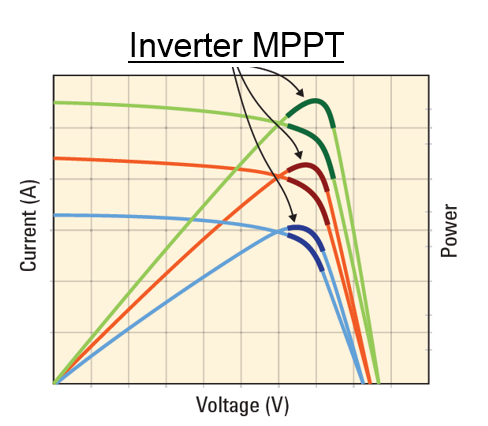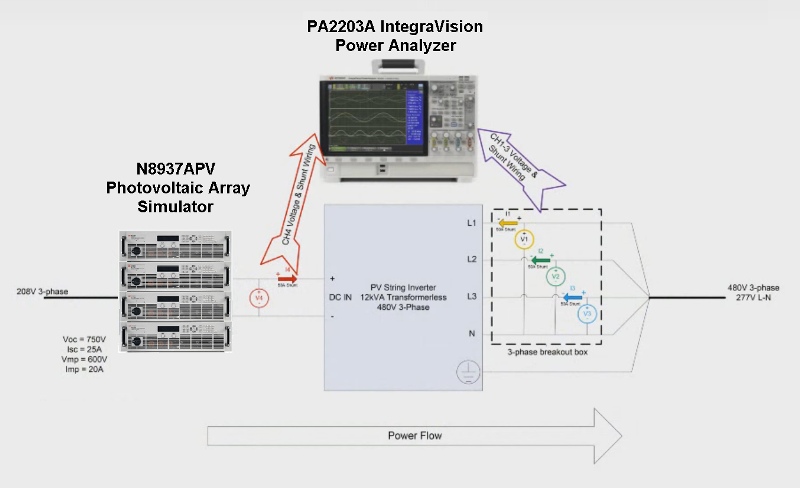By KEN CHRISTENSEN,
Global Product Manager, Power and Energy
Keysight Technologies, Inc.
www.keysight.com
Grid-connected distributed power generation is an increasingly important component in the power production portfolio of utilities around the world. As more renewable energy production systems and grid-connected storage devices are installed and their power-producing capacity realized, their contribution has proven to be a viable source of electricity and of assistance in power grid stabilization. For this trend to continue and to compete with conventional power-generation sources, distributed power generators must continue to improve their efficiency and reliability so that they deliver the lowest Levelized Cost of Energy (LCOE) to electrical power producers.
DERs test gauntlet
Grid-tied electricity generators, such as wind and solar inverters, and bi-directional grid-connected storage are considered distributed energy resources (DERs), sometimes referred to as distributed generators (DGs). The time and resource challenges of testing and qualifying DERs are an ever-increasing burden on suppliers of DERs. State-of-the-art laboratories are able to test a comprehensive variety of environmental conditions, grid electrical characteristics, and system components. This complex set of varying parameters is impossible to test in the real-world in a timely manner. For example, testing the performance of solar inverters during morning start-up conditions can only be done once per day, with one set of weather conditions and one type of solar module. If the conditions are not correct or if there is problem in the test setup, the test has to wait for a better day. Controlled lab testing is the only reasonable way to meet the ever-increasing time-to-market pressures on suppliers of DERs.
There is a gauntlet of testing required for any grid-connected power generator. These tests can be segmented in four areas (examples of each for solar inverters in North America are in parentheses):
- Product design verification
- Safety/Electrical codes/Government Regulations (NFPA70/NEC, FCC)
- Industry Standards (IEEE 1547/UL1741, CEC Inverter Efficiency)
- Grid Connection Requirements (CAISO Rule 21, ERCOT, WECC)
In addition, suppliers of distributed power generators are asked to perform complete characterization of the power generator’s performance in a wide variety of operating conditions that can be experienced when the device is in service for the life of the project, which is typically over 20 years. In all of these operating conditions, engineers need to measure power quality, harmonics, energy production, and power-conversion efficiency.
Solar inverters: a DERs test example
Solar inverters are an excellent example of DERs. Testing to all of the areas listed previously typically consumes 30% to 40% of the time needed to develop a solar inverter. Solar inverters must reliably produce power in the harshest environmental conditions — from blowing snow on a rooftop in northern Canada in January to blowing sand in a desert in the southwest U.S. in August. The inverter must be able to detect abnormal voltage and frequency conditions, and “ride-through” or disconnect at the discretion of the grid operator.
One of the most important aspects to the financial viability of a solar-power generation station is how well the solar inverter maximizes the conversion efficiency from dc to ac power. Over the lifetime of the power generator, fractions of a percent of increased energy production can lead to hundreds or thousands of dollars of increased energy to millions of dollars on utility scale projects. With the thin margins in today’s energy economy, these financial gains often make the difference in a project’s viability.
The overall conversion efficiency of solar inverters is dominated by two key components: Maximum Power Point Tracking (MPPT) efficiency and dc-to-ac power conversion efficiency. The power generated by a solar panel depends on where it is operating and the location on its characteristic current-voltage (I-V) curve (Fig. 1 ). The current produced by a panel increases as the irradiation increases. The voltage decreases as the temperature increases. Throughout the day, temperature and irradiance are constantly changing. Accurately and efficiently tracking the Maximum Power Point (MPP) is the job of the control firmware embedded in the inverter. To some degree, these control algorithms are the “secret sauce” in every inverter.

Fig. 1: This example of a typical I-V and power curves for a solar panel show how maximum power-point tracking must change for different irradiance situations.
To test the inverter’s ability to track the maximum power point of the solar array, test engineers can use a photovoltaic (PV) array simulator to emulate the behavior of their target array technology. A PV array simulator produces a power curve that matches a particular solar panel’s power production characteristics, since each solar panel model has its unique I-V curve depending on its technology (thin-film, poly-silicon, etc.) and solar cell-design characteristics. (Imagine the complexity and cost of trying to test every possible solar panel/inverter combination without a PV array simulator!)
Advanced PV array simulators also automate the testing and reporting to EN50530 — the industry standard for measuring MPPT performance. The EN50530 protocol exercises the inverter’s MPP tracker in both static and dynamic modes to consistently measure the inverter’s MPPT efficiency, a process that takes nearly seven hours to fully complete! Of course, automation of the EN50530 protocol and automatic generation of the reports specified in the standard can increase the effectiveness of test engineers.
Dc-to-ac power conversion testing typically follows the Sandia Inverter Test Protocol and/or IEC 61683, the international standard specifying the procedure for measuring the efficiency of power conditioners. These are complex procedures that require an environmental test chamber and precision measurement instrumentation. As with all measurements, the test instrument must have better precision than that of the measurement you’d like to make. The peak conversion efficiency of most contemporary solar inverters is above 98%, and engineers are trying to see conversion efficiency improvements of 0.1% in their designs. Hence, a power analyzer with at least 0.05% accuracy is required to make measurements of both the dc input and ac output.
To add to the complexity of all of this testing, the solar inverter technology is continually changing. To reduce component costs, installation costs, and I2 T losses, the dc voltage of solar arrays continues to increase. Next-generation solar-power generators, including the solar panels and inverters, are operating at 1,500 Vdc. Therefore, test laboratories must upgrade their power analyzers, PV array simulators, and power supplies to operate at this higher dc voltage.
An example of a Keysight Technologies test solution capable of testing next-generation 1,500-Vdc inverters, as well as current 600- and 1,000-Vdc inverters, includes a Keysight N8937APV PV array simulator and a Keysight IntegraVision PA2203A power analyzer connected to a 12-kVA, three-phase solar inverter (Fig. 2 ). With this solution, engineers can simulate real-world environmental conditions and evaluate their effect on all aspects of their inverter, as shown in the video at http://bit.ly/29hFpji. Combined with an ac grid simulator, this inverter test solution enables engineers to test for power quality issues, the quality of the generator’s power, and efficiency.

Fig. 2: In this test example, a 12-kVA, three-phase inverter is tested using N8900APV Photovoltaic Array Simulators (60-kW configuration shown) and a PA2203A IntegraVision Power Analyzer.
Related Products: Solar Cells
Advertisement
Learn more about Keysight Technologies, Inc.





